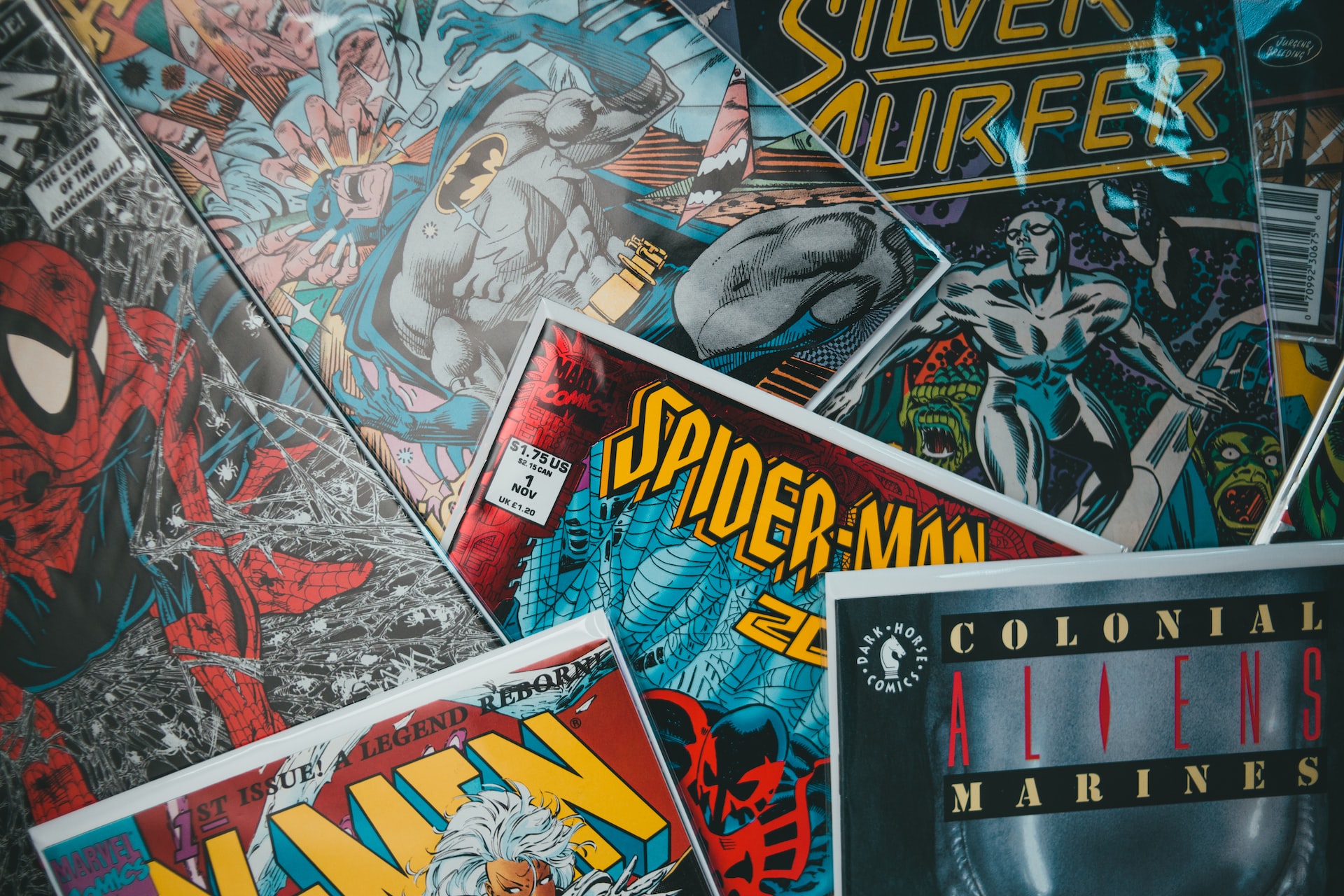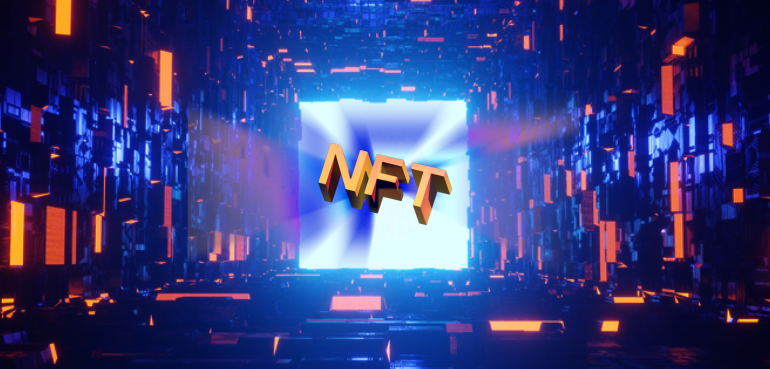Every week we simplify the market into key points so you can stay up to date on market trends, upcoming drops, top project guides and much more!
BY Jex Exmundo
October 26, 2022
Judging by industry conventions, the third highest-grossing film of 2014 had no right succeeding the way it did. It was based on source material that held a fanbase largely consisting of some of the most niche comic-book fans. Its cast featured actors best known for playing supporting roles in sitcoms and professional wrestling. It was weird, it was extremely spontaneous, and its climax was a direct reference to Footloose. So what was that film?
It was Guardians of the Galaxy, and it raked in more than $700 million at the box office.
But keep in mind: 2014 was eight years ago. Yeah, a lot’s changed since then, with perhaps the biggest change coming at the turn of the 2020s, and the rise of blockchain technology and Web3 into mainstream prominence. Films and related franchises about comic book characters have saturated media, sometimes with unseemly, perilous consequences for storytelling in general. So it’s time to explore what role NFTs will play in the future of storytelling — particularly in the context of comic books.
Several creators have looked at NFTs as a potential catalyst for massive change in how future franchises are developed and built. One notable example of this is the Forgotten Runes Wizard’s Cult. Via the sale of their Wizard NFTs, they’ve granted holders the ability to do whatever they wish with the characters.
And with that freedom, holders have spun stories of their own within Forgotten Runes’ Book of Lore — a codex, if you will, on each character in the collection.
So what is the Forgotten Runes team doing with all these characters and community-built lore? Telling stories — all in service of its goal of speedrunning the next big fantasy franchise. “We want to get into the mainstream. We want to get into the entire audience that loves the fantasy genre,” Forgotten Runes Co-Creator Elf said in an interview with nft now. “And so, making these ‘legacy media expressions’ is a really good way to do that.”
But even if the mediums that Forgotten Runes have chosen to express its world and characters are traditional, the creative process has been anything but. Even with so many different authors contributing to the text, Forgotten Runes has managed to put together cohesive pieces of media to tie its community’s efforts together.
Despite having a TV series and a blockchain game in the works, perhaps the most promising arm of Forgotten Runes’ media ventures is its comic book. The reason is simple: turnaround for this type of media can be incredibly quick. “A lot of people would often question us like, ‘How is that going to work, getting so many different stories from a decentralized community? How are you going to actually put all this stuff into one media expression? And my answer now is just like, well, look at this comic. This is how we do it. The proof is in the pudding,” Elf said.
And what have Forgotten Runes done with prints of its NFT comic? They gave it away. To everyone. “The whole point is to get to a non-crypto audience and expand,” Elf said. “A lot of people have been telling us to token gate a lot of the things that we make and I get why they say that, but it just doesn’t make sense. […] Why would you limit your audience?”
“A comic [is a] much faster way to put cold content into a large, professional, studio-quality media expression,” Elf said. “[They] could experiment faster, iterate faster, and explore characters and stories faster.” Thanks to the inherently quick turnaround that comics as a medium possesses, there’s reason to believe that this format may lead the way in attracting new fans to an NFT-first franchise — and Forgotten Runes is far from the only party privy to this fact.
Even for NFT collections that initially started out as mere PFP offerings, several creators realized comics were a great way to flesh out the characters within without waiting around for years before their idea came to fruition. One such creator was Pixel Vault founder GFunk, who turned the iconic CryptoPunks collection of 2D sprites into the living, breathing cast of the PUNKS Comic in May 2021.
There’s no denying that giving a franchise’s fanbase and community the ability to author its continuity offers unprecedented levels of engagement between fans and their objects of fandom. However, when theoretically anyone holding a franchise’s NFT can participate in its story, there are some slight risks.
To illustrate, let’s look at one popular method of expression that fandoms far and wide have embraced since the late 90s: fanfiction. In the hands of a capable writer, this medium is ripe for further developing somewhat one-dimensional characters in their original texts, amongst other literary possibilities and explorations. If an author succeeds in building a convincing world with a logical set of rules, then any half-decent fanfiction writer will have plenty to work with.
However, the opposite also holds true. Case in point, let’s look at My Immortal — a piece of Harry Potter fanfiction so universally disliked that some have even speculated it to be an overly elaborate piece of satire lampooning the worst of what fanfiction had to offer. If J.K. Rowling’s Wizarding World featured a similar structure to decentralized NFT franchises, then My Immortal would be recognized as actual canon within the franchise. In the real world, this piece did little to diminish the success of the Harry Potter franchise. From a certain subset of the Potterhead community, it may have even added to it. The same can’t be said if the work was actually recognized as a canon entry into the series. Just look at how quickly Game of Thrones seemingly disappeared overnight from the mainstream conversation following the broadly negative reception its final season received.
Thankfully for NFT franchises, there are safeguards to ensure that anything approaching My Immortal levels of quality stays within the community. In the case of Forgotten Runes, a natural curation process takes place to highlight the best of what its community has to offer — direct references to user-created lore within its legacy media expressions. “I just read issues one through four [of the Forgotten Runes comic] and [our comic artist’s got] a good 20 to 30 wizard references from different community members in these first four issues. It’s a strong proof of concept. I want to continue that sort of creative pipeline through everything we do, through the show, through the game, through everything,” Elf said.
Perhaps most revealing of the future role NFT-built franchises will assume in storytelling is the involvement of Marvel and DC in the NFT space. Recently, former Marvel leads teamed up to launch the Slam Girl franchise with an NFT, due in large part to the technology’s potential for creative expression and community building.
“When we started doing comic books it was ink-on-paper. Now you see a little bit of digital comic books and what have you. But it seemed to me that NFT is the real entry into the metaverse and into today’s communication,” Slam Girl Curator and Former Marvel Executive VP Shirrel Rhoades said, in a prior interview with nft now. “I think it’s opening up a whole new world for collectibles, […] storytelling, […] and visual presentations.”
However, outside of this, legacy comic brands have largely been interested in the potential of NFTs as digital collectibles. It only makes sense, since people have collected comics for as long as they’ve read and written them.
For Marvel fans, digital collectible marketplace VeVe has trickled a steady supply of Marvel-themed collectibles into the market. These can range from digital figurines to digital copies of iconic Marvel covers from its long history.
Similarly, DC has also launched NFT collectibles featuring The Caped Crusader alongside the DC Universe, the comic book publisher’s new Web3 imprint. Inside, users will be able to engage in the tradition of buying and selling comics amongst fans and collectors thanks to its new DC Collectible Comics initiative, which will mint new digital collectible comics each week from the publisher’s vast archives. Spearheading its October 27 launch is a digital collectible version of the very first issue of Superman, which will feature a limited 3,000-piece mint. It’ll sport an accessible price, too, at $9.99. Upon purchase, buyers will be assigned different rarity levels, ranging from common to legendary. Perhaps comic franchises that started as NFT collections will one day do the same, bringing their journey in Web3 full circle.
Even in the face of a bear market, what creators like Forgotten Runes and Pixel Vault are continuing to do bodes well for the future of the NFT landscape. Although it would be nice for projects to see their value and sales trend upward over time, the legacy comic industry and all its media offshoots have shown us one thing: What matters most is for the ideas, stories, and characters contained within NFT comics to continue to spread and promulgate.
But in the long-term, one idea that Elf believes should spread to all the brands currently dominating the media landscape is something inherent to most Web3 projects: that the focus should be placed on the fans and creators first, and shareholders and companies second.
“Creativity takes the backseat to profit,” Elf said about his experiences working in traditional media. “It’s the non-creative people at the top who make the final creative decisions. The antidote is to invert that model. What if [the fans and creators] actually got to sit in the creative driver’s seat? What kind of amazing product would you get from that model?” It might be hard to see now, but there’s a high chance it’ll be on the pages of an NFT comic book.



